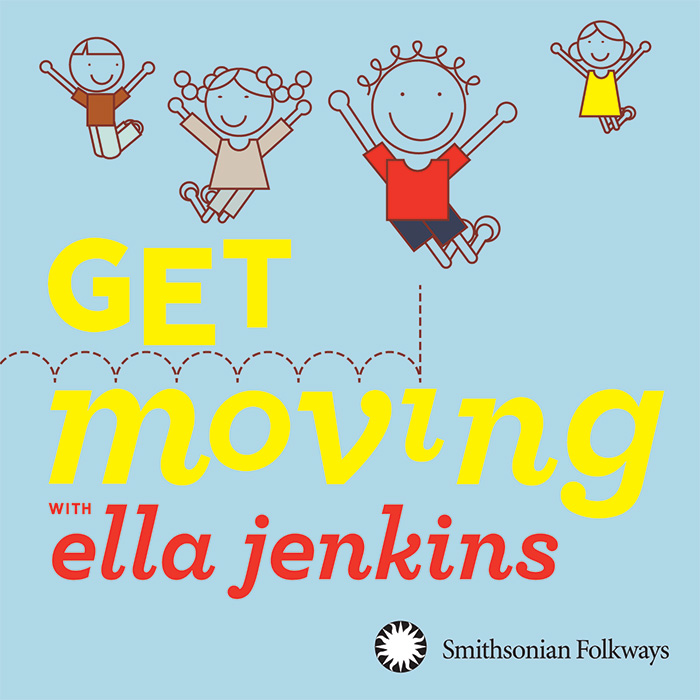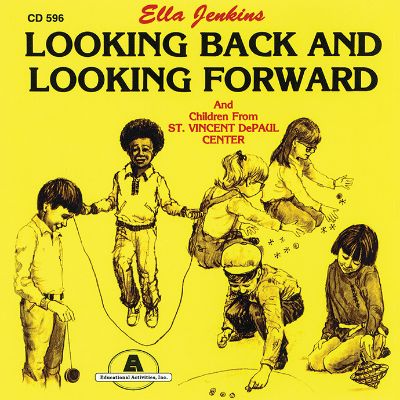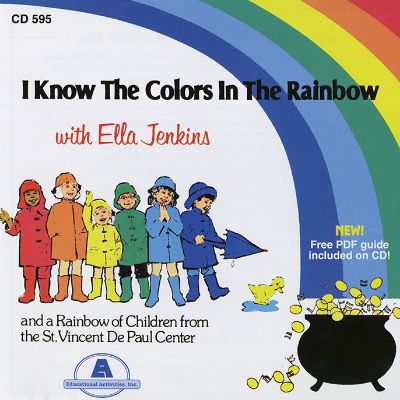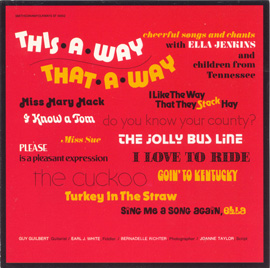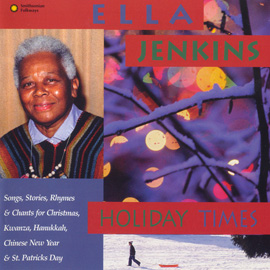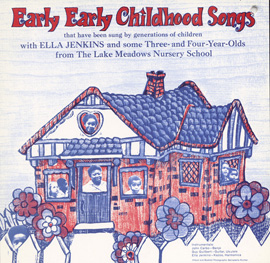Summary
In these two lessons, accompanied by music from Get Moving with Ella Jenkins, young students can develop comfort singing, clapping, and moving along with musical tracks, while also developing an understanding of basic musical concepts (beat, volume, notes, and rests).
Suggested Grade Levels: Pre K – K
Country: USA
Region: Americas
Culture Group: American
Genre: Folk
Instruments: Vocal, Ukulele, Maraca
Language: English
Co-Curricular Areas: Visual Art, Physical Education
National Standards: 1, 2, 6, 8, 9
Prerequisites: None
Objectives:
- Getting young children to sing and explore their voices
- Clapping along with the music and understanding the concept of the music “beat” Learning to move in rhythm with the beat of a song
- Understanding the importance of the relationship between music and dancing
- Identifying the difference between soft, or piano singing, and loud, or forte singing
- Understand the difference between sound and silence, or notes and rests
Material:
- CD – Get Moving With Ella Jenkins. Tracks 1 and 2: “Hello” and “Stop and Go”
- Stereo
- Voices and Hands
Lesson Segments:
- Hello (National Standards 1, 2, 6)
- Stop and Go (National Standards 2, 8, 9)
Lesson Segment 1: Hello
- Listen to the first track, “Hello,” on Get Moving with Ella Jenkins.
- Ask students to listen to the song again, and try and guess what kind of instruments Ella is playing.
- Explain to the students that Ella is going to sing first, and then the students will join in when the children and teachers on the track join in.
- Have students clap along with the children on the track.
- Explain to students the difference between Piano (singing softly as the children did at the beginning of the song and Forte (singing loudly as the children sang at the end of the song).
- Helpful Hint: If students are having a difficult time understanding the concept, the teacher may wish to draw three characters on the board – a papa bear, a mama bear, and a baby bear. The papa bear is loud (forte), the mama bear is medium loud (mezzo forte or mezzo piano), and the baby bear is quite (piano). The students can practice talking or singing like papa bear, mama bear, and baby bear. Teachers may wish to create a coloring worksheet of the bears for the students, or incorporate the lesson into craft time by creating hand puppets or popsicle stick figures of the three different bears (or whichever animal the teacher chooses).
- Explain to students the concept of beat. All music has a beat, or pulse, much the same way that your heart has a beat, or pulse. When we clap along to the music, we are clapping along to the beat, or the heart of the music.
Extension: Explain to students the three instruments that Ella is using (a ukulele, a maraca, and her voice; be sure to explain to students that the voice is also an instrument).Teachers may wish to show videos or pictures of the instruments. If the teacher has access to the instrument they may wish to show, or play the instruments for the students. If not, the teacher could create a worksheet for the students to color (perhaps with a child, a ukulele, and a maraca).
evaluation: As a class, students will listen to the song two additional times to apply the skills they have learned. During the first replay of the song, students will identify and clap along with the beat. During the second, students will demonstrate their understanding of piano and forte by either (a) physically moving to stand beneath the teacher’s illustration on the board of the baby bear (piano) or papa bear (forte) at the appropriate points in the song, or (b) by holding up their corresponding drawings.
Lesson Segment 2: Stop and Go
- Listen to Track “Stop and Go” in Get Moving with Ella Jenkins.
- Ask students to listen for the different kind of movements that Ella tells the children to make (walk, skate, tap your knees, beat your chest, shake your head, clapping, hopping, jump, etc.).
- After listening to the track, ask students what the kind of movements will look like (walking, skating, tapping knees, beat your chest, shake your head, clapping, hopping, jump).
- Explain to students that when Ella tells them to stop, they are supposed to stand as still as a statue.
- Have students perform the actions along with Ella. Make sure to encourage them to sing along with the children at the end of the track.
- Ask students:
- Do they enjoy dancing to music at home?
- Have they ever seen their parents dancing?
- Have they ever watched a movie or television show with dancing on it? (Glee, Dancing With the Stars, etc.)
- Explain to students the cultural importance of music and dance. Teachers may wish to show students videos of people from different cultures dancing.
- Discuss with students the difference between sound and silence. Explain to the students that silence is just as important to music as sound. Silence in music is called a rest. Rests can be either short (quarter rests) or long (whole rests).
- Ask the students to listen to the recording again, and try and figure out where there are “rests” in the music (where Ella tells them to “stop”).
- After the students have figured out where the rests in the music are, have the students put their finger up to their lips (shhhh gesture). Explain to the students that whenever they are told to “stop” they are to be as still as a statue, as well as being as silent as one.
Evaluation: Students will demonstrate their understanding of (a) sound and silence and (b) the relationship between music and dance through a game: students will dance when they hear sound, and freeze during points of silence in the song, following Ella’s instructions.


